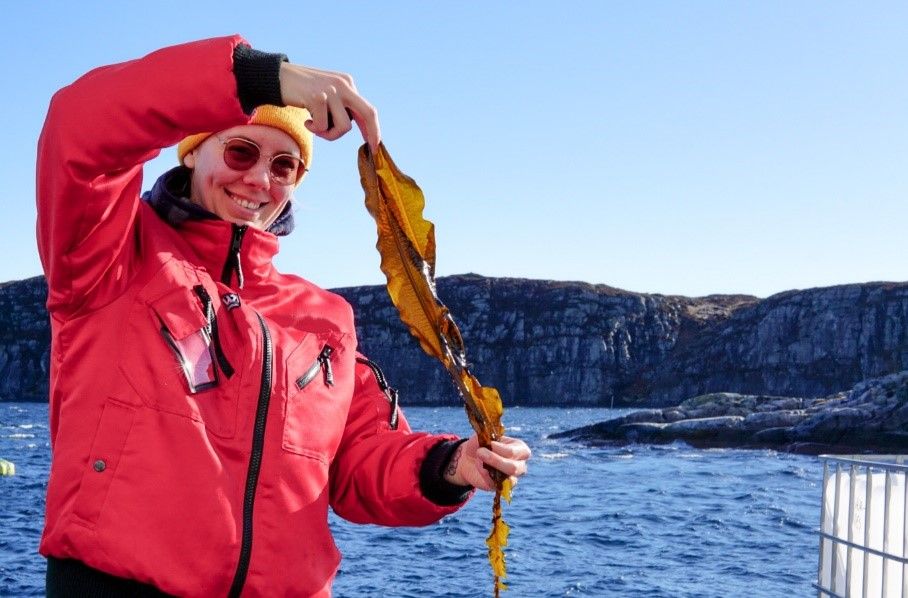
The spring 2022 marks the first kelp harvesting season during the SusKelpFood project. Some of the kelp biomass harvested from 4 Norwegian kelp producers actively participating to the project (Arctic Seaweed, Tango Seaweed, Lofoten Blue Harvest and Ocean Forest) was used in various research experiments aiming to identify processes for the sustainable production of safe, nutritious and flavourful ingredients from cultivated kelps for the food industry.
One of the trials conducted this spring focused on rinsing of winged kelp (Alaria esculenta) and sugar kelp (Saccharina latissima) with heated seawater with reduction of the iodine content as the main objective. While blanching in freshwater is a known efficient technique to reduce the iodine content of kelp, it is also associated with a loss of soluble nutrients such as minerals. The use of seawater is far more promising with respect to retention of minerals and will be investigated in SusKelpFood. In this experiment, exposure to heated seawater (35 and 45 °C) were tested in time series using winged kelp from Arctic Seaweed and sugar kelp from Tango Seaweed. The optimal processing conditions for each species will be identified based on the iodine content measured in the samples as well as the retention of nutrients of interests in these kelps (minerals and vitamins) and flavour-active compounds.
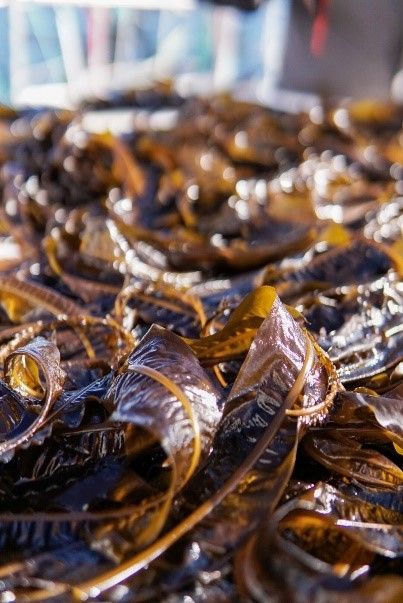
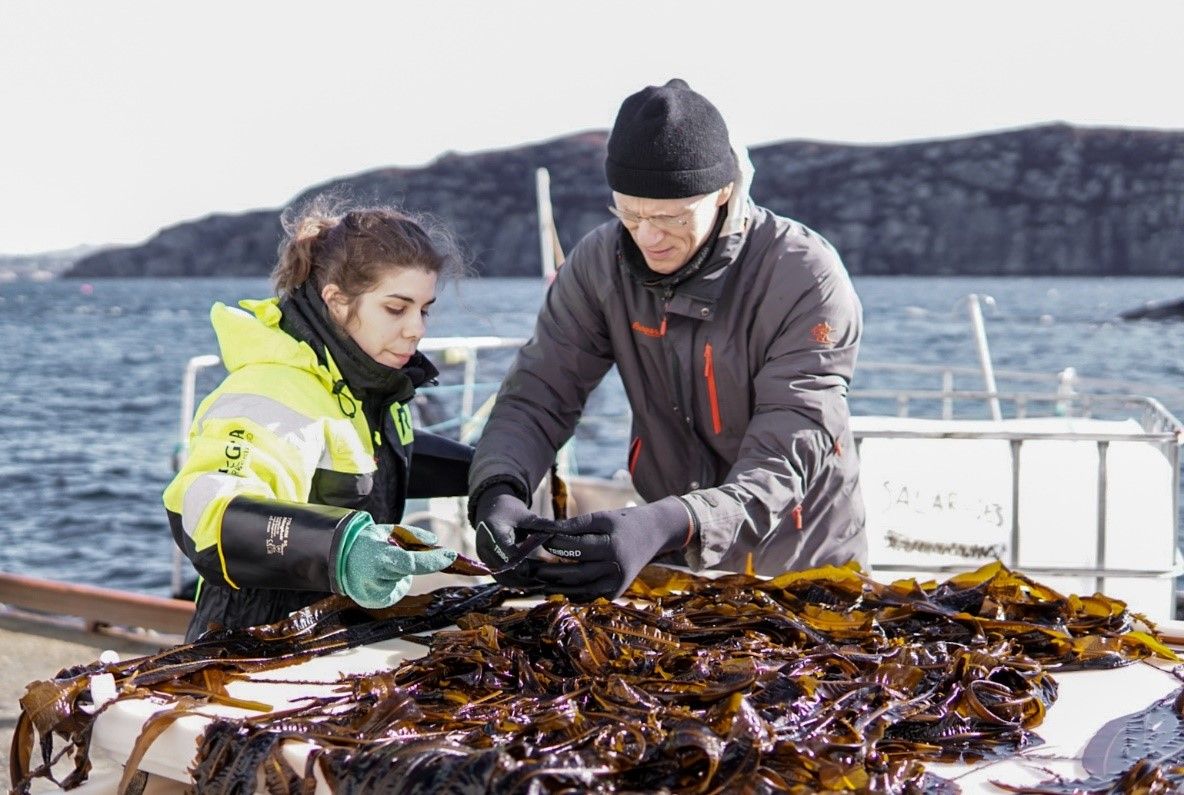
Personnel from DTU, IMR and Arctic Seaweed preparing freshly harvested winged kelp material for seawater blanching experiment at Arctic Seaweed’s facility in Misje, Norway. Photo credit: Cecilie Bay Wirenfeldt.
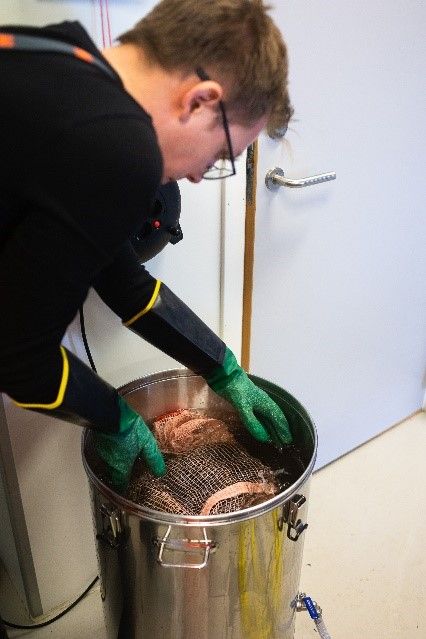
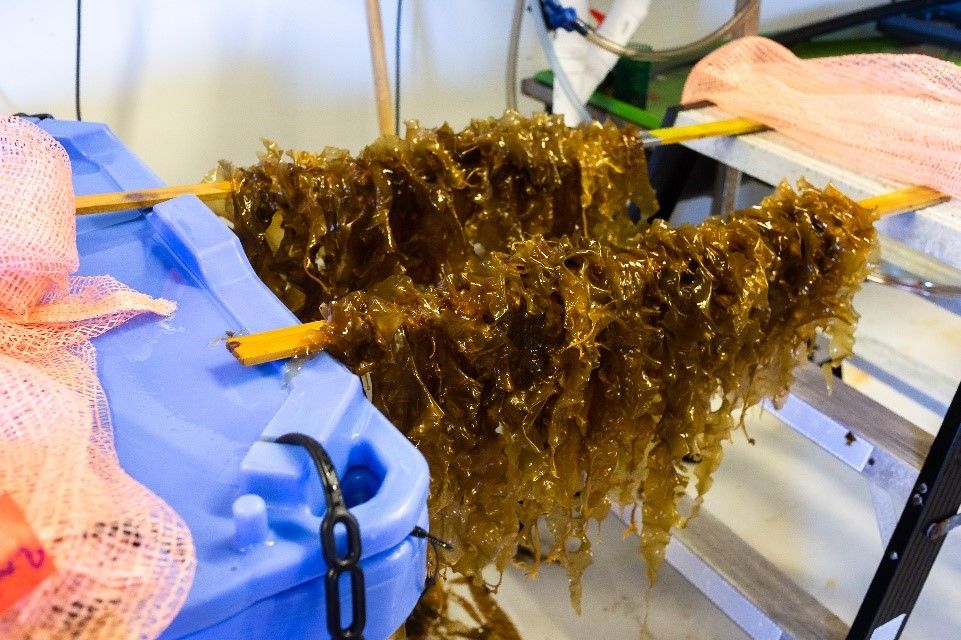
Seawater blanching of sugar kelp from Tango Seaweed at Møreforsking’s laboratory facility. Photo credit: Pierrick Stévant.
Two fermentation trials were also conducted during this season to i) optimize the process conditions for the fermentation of winged kelp at Arctic Seaweed and to ii) investigate the potential of marine lactic acid bacteria isolated from sugar kelp (referred to as “kelp juice”, fig. 3) to be used as start culture for the fermentation of freshly harvested biomass. Quality analyses of the samples including microbial safety and product stability are ongoing.
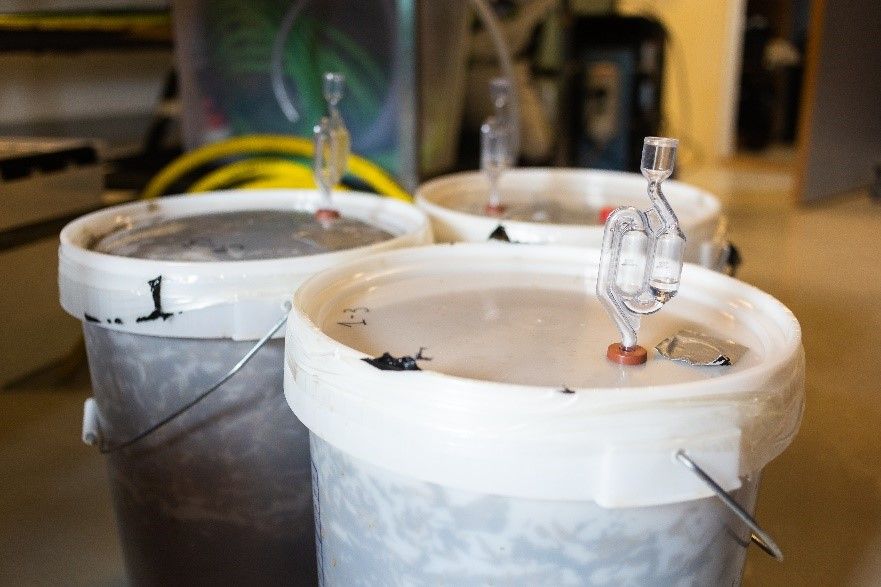
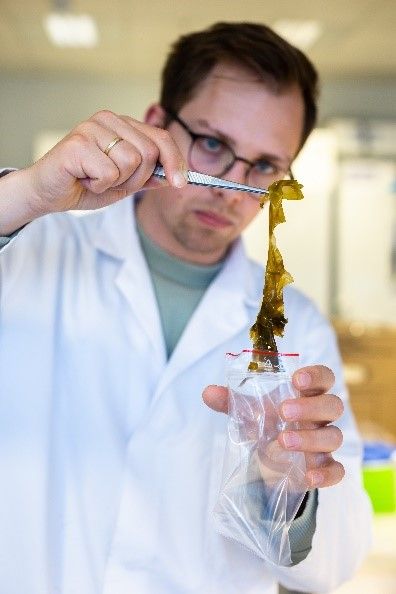
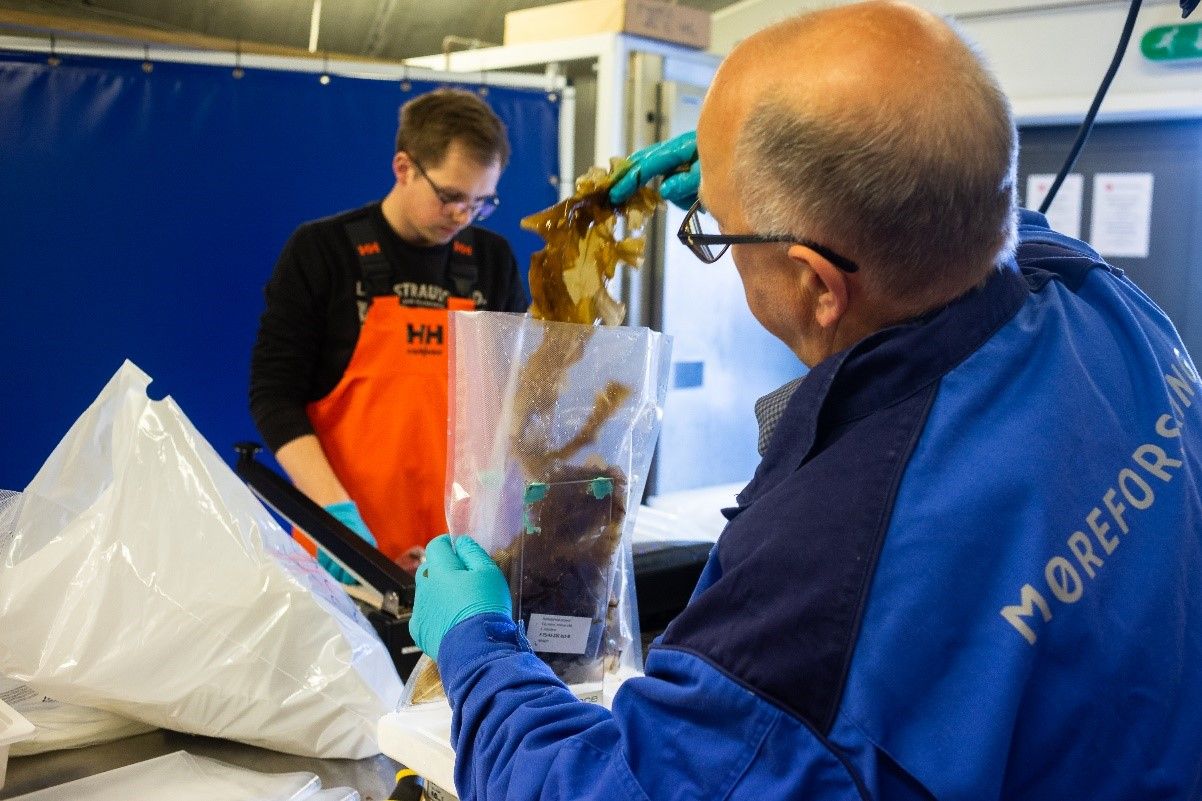
Fermentation tanks containing kelp juice used as start culture to ferment batches of freshly harvested kelps from Tango Seaweed (top left) and personnel from Møreforsking processing fermented sugar kelp samples at Møreforsking’s laboratory facilities. Photo credit: Pierrick Stévant.
Other activities in connection with the harvesting season includes the collection of cultivated winged kelp and sugar kelp across biomass producers to be analysed for the presence of typical allergens from molluscs, crustaceans and fish (linked to the potential presence of biofouling organisms in cultivated kelps) and assess the potential health risks associated with the consumption of kelp with regards to these compounds. Commercial samples of winged kelp, dried and fermented material, were also collected to investigate the stability of these products in terms of sensory attributes (flavour and odour) over a 2-years period and to document the changes in flavour-active compounds.